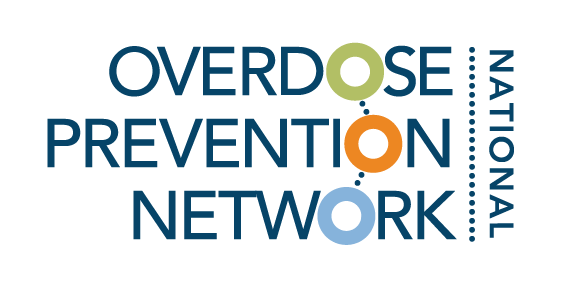
Resource Library
Toolkits, guides, and other resources vetted by experts in overdose prevention.
Filter by category and tags, or search by keyword (ex. COVID-19, harm reduction).
COPN Crafting a Persuasive Narrative, Part 1: Knowing your audience and messaging appropriately
Utilize this tool to develop a persuasive narrative of your coalition’s work and community impact.
COPN Build Your Own Narrative Worksheet
Utilize this tool to create an impactful narrative for crafting an impact message of your coalition’s work.
Fentanyl Frequently Asked Questions
This fact sheet answers frequently asked questions about fentanyl, buprenorphine, and the impact fentanyl has on overdose prevention efforts.
Words Matter - Terms to Use and Avoid When Talking About Addiction
This page offers background information and tips for providers to keep in mind while using person-first language, as well as terms to avoid to reduce stigma and negative bias when discussing addiction. Although some language that may be considered stigmatizing is commonly used within social communities of people who struggle with substance use disorder (SUD), clinicians can show leadership in how language can destigmatize the disease of addiction.
Principles of Harm Reduction
Harm reduction is a set of practical strategies and ideas aimed at reducing negative consequences associated with drug use. Harm Reduction is also a movement for social justice built on a belief in, and respect for, the rights of people who use drugs.
Harm Reduction Education On-Demand
Harm reduction strategies and tools should be accessible to everyone – regardless of location, time and or experience. National Harm Reduction Coalition offers a series of self-paced online learning modules that groups and individuals can complete on their own schedule and terms – anytime, anywhere.
Harm Reduction Issues: Overdose Prevention
The National Harm Reduction Coalition (NHRC) offers evidence-based strategies that reduce the risk of dying from an overdose. It aims to support people who use drugs, and the people who love people who use drugs, with information to mitigate the risk of an overdose and to stop an overdose while it’s happening.
Drug Facts
Most overdose deaths are preventable, but the "tough on crime" rhetoric of the decades-long drug war and the stigma associated with drug use have blocked the widespread adoption of life-saving overdose prevention and treatment policies. The Drug Policy Alliance (DPA) is leading the national effort to reduce drug overdose deaths by promoting sensible, evidence-based solutions at the state and federal level.
Your Brain On Fentanyl
This video offers a new perspective on the effects of fentanyl on the brain, and how fentanyl has changed the landscape of overdose prevention.
Project COPE: Community Overdose Prevention Education
Learn about New York's Project COPE, which focuses on harm reduction and how you can help prevent overdoses in your community.
Fentanyl Use and Overdose Prevention Tips
Many individuals consume fentanyl without their knowledge (because they do not realize that it is in a product they’re using), while others are intentionally using fentanyl because of its potency. It is partly responsible for the current overdose crisis in the U.S., combined with a lack of resources and the criminalization of people who use drugs. This fact sheet from the National Harm Reduction Coalition (NHRC) addresses some of the myths and lesser known facts about fentanyl.
Are Primary Care Providers a Good Fit for Treating Substance Abuse Disorders?
This video explains the importance of primary care in treating substance use disorder, and how providers can work to decrease the stigma around treatment services.
Preliminary Monthly Fatal Drug-Related Overdose Counts for June 2021 - May 2022
The CDPH Substance and Addiction Prevention Branch (SAPB) has recently updated this preliminary statewide monthly count data. It is presented by substance and posted on the Overdose Prevention Initiative (OPI) Data webpage. These counts may not represent all overdose-related deaths that occurred during the corresponding period. Subsequent versions of this data resource will also be available on the OPI Data webpage. The CDPH team continues to update the California Overdose Surveillance Dashboard with death data.
Fentanyl and Overdose Prevention Communications Toolkit
Use this toolkit from the California Department of Public Health (CDPH) to share information about the risks of fentanyl and how to prevent overdose.
California Healthy Kids Survey Data
The CalSCHLS system was created by the California Department of Education (CDE) to efficiently and cost-effectively provide school districts and their partner communities with quality local data which can be used to improve student academic performance and social-emotional, behavioral, and physical health of all youth. It assesses key indicators linked to success in school, career, and life.
Jennifer Aaker - Persuasion and the Power of Story
Jennifer Aaker studies happiness, and how stories can affect our happiness; she believes that stories are more meaningful–more memorable, more impactful, and more personal–than statistics alone. When used with statistical data, stories are an incredible persuasive tool that can help us as humans decide what to believe in a world that is otherwise incredibly over-saturated with information.
American Medical Association
Throughout history, the AMA has always followed its mission: to promote the art and science of medicine and the betterment of public health. As the physicians’ powerful ally in patient care, the AMA delivers on this mission by representing physicians with a unified voice in courts and legislative bodies across the nation, removing obstacles that interfere with patient care, leading the charge to prevent chronic disease and confront public health crises, and driving the future of medicine to tackle the biggest challenges in health care and training the leaders of tomorrow.
The Network for Public Health Law
The Network for Public Health Law provides visionary leadership in the use of law to protect, promote and improve health and health equity. We provide non-partisan legal technical assistance and resources, collaborating with a broad set of partners across sectors to expand and enhance the use of practical legal and policy solutions.
Remedy Alliance for the People
Access to naloxone isn’t just a funding issue. Barriers to accessing low-cost naloxone are a result of the decades-long war on drugs. This organization is working to eliminate barriers from three different angles: distribution, technical assistance, and research.
Chicago Recovery Alliance
The Chicago Recovery Alliance (CRA) is a racially and ethnically diverse group composed of people living with HIV and drug use, working in addiction treatment, healthcare, education, law and other assorted areas. CRA is unique as an organization in that our work entails building one-on-one relationships with individuals affected by HIV and drug use and provide them with a wide array of options for achieving any positive change as they define it for themselves. CRA is an organization for those interested in directly serving, supporting, educating and advocating with others for reducing drug related harm.



















